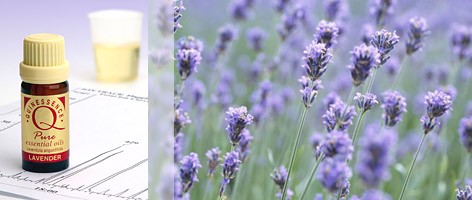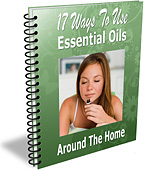
Shelf Life of Essential Oils
How long do essential oils last? The shelf life of essential oils, carrier oils and massage oils varies tremendously, and their life expectancy can be influenced by many different external factors. Despite what you may have been told or read in books, the so-called 'shelf life' of natural products can be extremely difficult to predict with any certainty because there are so many variables.
The truth is that essential oils and carrier oils are not the same as milk or bread, which follow a predictable and rapid path toward spoiling over a known period of time. The shelf life of a natural oil is governed by its chemical stability, and anything that interferes with this stability will cause the oil to start the slow, but inexorable process of deterioration known as oxidation.
Heat, sunlight and air can all have a detrimental effect on the chemistry of essential oils, carrier oils, and mixtures of both such as massage oil blends. In addition, the complex and varying chemistry of natural essential oils means that the rate of deterioration will be different for every individual botanical species of oil, even when kept under ideal conditions. This means that some oils will last far beyond what many books claim, whilst others may deteriorate earlier than stated.
To help you with all of this, these basic guidelines will show you how to extend the life expectancy of all of your essential oils, carrier oils and massage oils. You have invested your money in all your aromatherapy products, so it certainly makes sense to look after them properly, thereby ensuring their therapeutic properties are not weakened or lost.
Storage is the key
Providing the oils were fresh when you purchased them from your supplier in the first place, correct storage is most definitely the key to preserving the freshness and potency of your oils. This can not be stated strongly enough, and to learn more about this crucial subject see our page dedicated to essential oil storage.
Both essential and vegetable oils do not like extreme, or repeated changes in temperature, and when not in use should be stored in a cool dark place, away from direct sunlight and other sources of variation in temperature. Never leave oils in a place where the sun will shine directly on them - like in your car or on a window shelf in the bathroom, for example.
Chain reaction
If you fail to remember this, your oils will begin to spoil much sooner than they should due to the action of them continually heating up and cooling down. Once the process of deterioration has begun it can not be stopped, and like a chain-reaction it gathers speed according to the intricate balance of the oils chemical constituents.
This is why dark coloured glass bottles are used to package essential oils, since they offer some protection to the oil from the sun's harmful ultra-violet light. However, these simple house-keeping practices must still be observed if the bottles are to have any chance of doing their job properly. Leaving any oil, in any colour of bottle, for any length of time in the sun is condemning it to an early death!
Here are some basic guidelines giving an indication as to the length of time a given oil should remain in good condition. Just remember these can only ever be basic guidelines and not firm, fixed periods after which the oil should be considered to have expired. There are simply too many variables for this to be considered an exact science.
Essential oils
Apart from a few exceptions, all steam distilled essential oils have a shelf life of at least 2 years, and even more when stored properly. Tea Tree, Pine and Fir oils are the above exceptions, and typically have a shelf life of around 12 to 18 months due to certain components in their natural chemical composition.
Cold pressed citrus oils have the shortest shelf life of all essential oils due to a high proportion of components called terpenes which are more prone to oxidisation. Therefore extra care should be taken to store them safely away from sources of heat. If they were fresh when you purchased them from your supplier, you can expect citrus oils to remain in good condition for 9 to 12 months, and even longer when cared for properly. If you normally buy them in 10ml sizes, immediately decant them into two 5ml bottles and this will protect one bottle from oxidizing for longer.
Due to their chemical makeup, essential oils do not turn rancid like vegetable oils, they simply degrade gradually into a state where the therapeutic properties become diminished. Your nose will tell you that something is seriously wrong long before the point when the oils become unsuitable to be added to carriers for use on the skin.
Absolutes & Phytonics
Absolutes and phytols generally have the longest shelf of all oils, often remaining in good condition for up to 5 years and beyond.
Carrier oils
Most cold pressed carrier oils used in aromatherapy typically have a shelf life of between 9 and 15 months, again depending on the particular oil in question and how well it is stored. Grapeseed oil has perhaps one of the shortest shelf lives at around 6 to 9 months, with Borage, Carrot and Evening Primrose oil close behind at around 10 to 12 months. These oils in particular are susceptible to damage caused by temperature changes.
At the other extreme, Coconut and Jojoba oil (which is really a liquid wax) will keep for many, many years. The Quinessence 5% Dilution Range uses Jojoba oil as a diluent for this very reason - these products will keep for many years as opposed to a dilution produced with almond or grapeseed oil which would only last for a few months.
Carrier oils will go rancid eventually due to the presence of unsaturated fatty acids which tend to oxidise quickly if not stored properly. However, this process usually takes up to a year and these products should have been used long before such a long period. This is one very good reason to buy smaller sizes of these products more regularly, rather than the one purchase of a larger size. If you are not going to use the oil quickly it can be a false economy.
Body oils
The shelf life of a body massage oil is typically around 6 months, although good storage conditions will extend this further, and the fridge is again a useful place to store them until they have been used up.
Just how long your blend will stay therapeutically active will depend upon which carrier oil you have used, and of course which essential oils you have added. It (almost) goes without saying that blends of citrus oils will have a shorter lifetime than most other essential oils. In reality, a massage oil containing only citrus oils would be very unusual so this would be a very extreme case.
Quinessence Massage Oils contain natural vitamin E to protect against oxidation, and in reality they provide a shelf-life well beyond that which is stated on the bottle. Our factory has a temperature controlled warehouse which maintains the optimum storage conditions for all our oils, raw materials and finished products. The high turnover of our stock ensures that everything you purchase from Quinessence is fresh and therapeutically active.
Caveat Emptor - buyer beware
All of these guidelines assume that the products are fresh when you originally purchase them. Bear in mind that many oils can originate on the other side of the world and may have already taken 3 months to reach a distributor. Such oils may well have passed through the hands of several traders before finally arriving at your suppliers premises. The storage conditions used by everyone in the supply chain will have a major influence upon the condition of the oil before you have even purchased it.
There are many variables that influence the shelf life of essential oils, and this serves to highlight the importance of dealing with a supplier that you really trust. Specialist aromatherapy suppliers often have regular deliveries of oils, so this aspect is less of an issue than if you buy your oils from pharmacies and health food stores.
If you are only able buy your essential oils from a store for some reason, be sure to avoid those that are displayed on shelves under hot lighting or in direct sunlight. One final telling sign to watch out for - rows of bottles sitting on shelves that have accumulated a visible layer of dust!
Remember, the shelf life of essential oils can be extended quite easily. Choose your source of supply very carefully, and after purchasing your oils simply take good care of them. In turn, they will serve you faithfully and bring you the results that you desire and deserve, for much longer.
Copyright © Quinessence Aromatherapy Ltd 2006. Written by Geoff Lyth
If you enjoyed this article, please click the 'Like' button and help spread the word:
Next Quality Control


